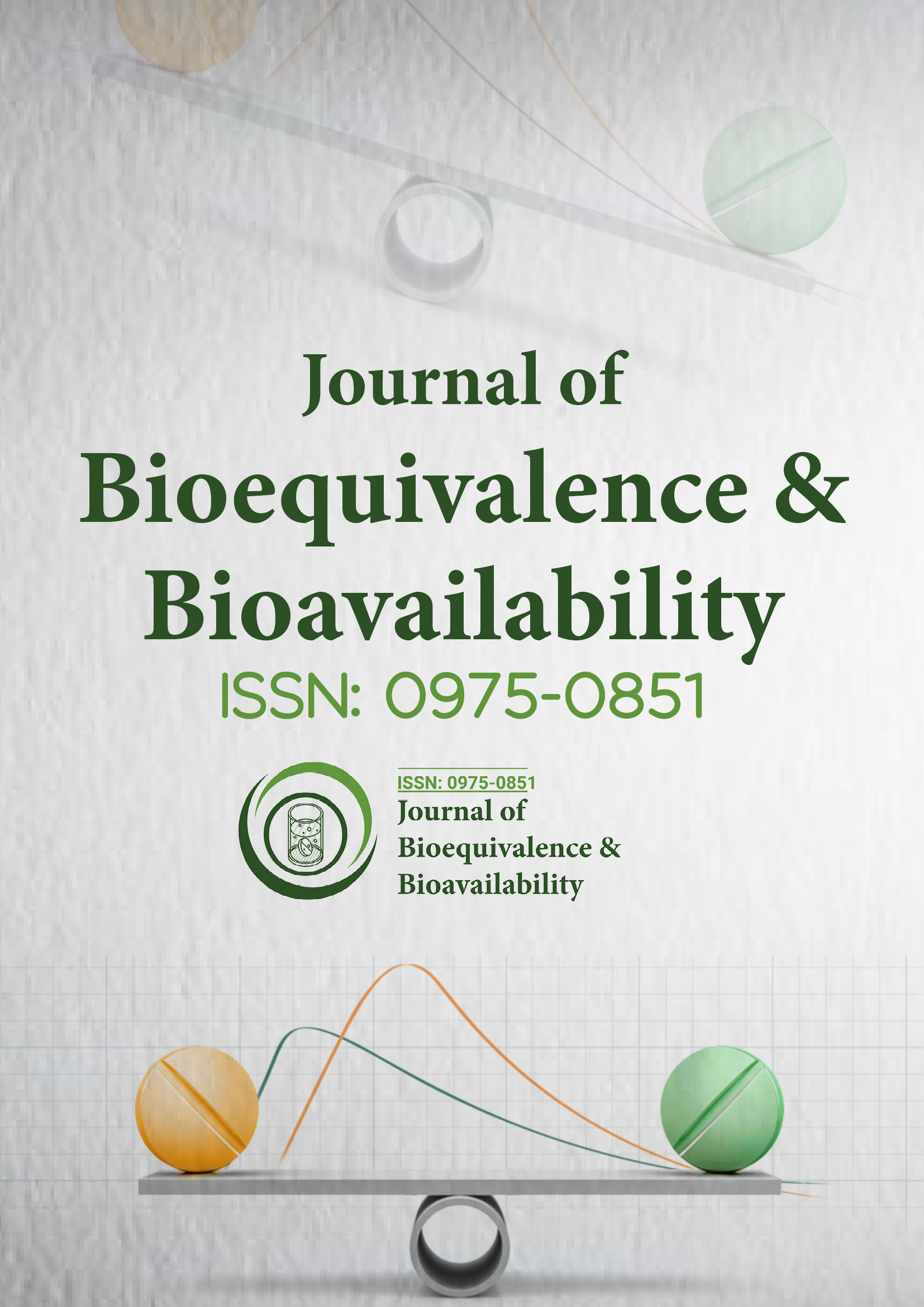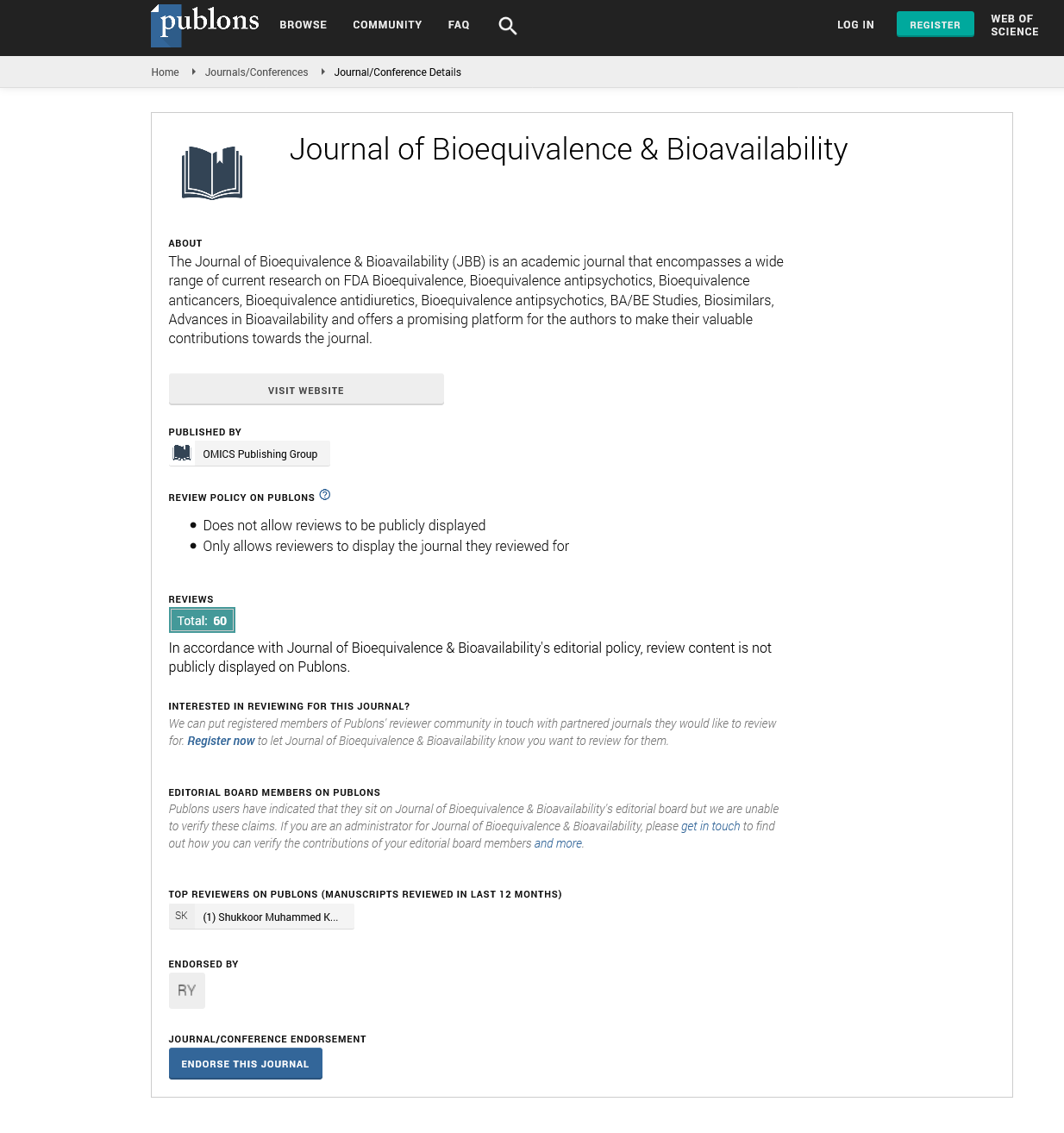Indexed In
- Academic Journals Database
- Open J Gate
- Genamics JournalSeek
- Academic Keys
- JournalTOCs
- China National Knowledge Infrastructure (CNKI)
- CiteFactor
- Scimago
- Ulrich's Periodicals Directory
- Electronic Journals Library
- RefSeek
- Hamdard University
- EBSCO A-Z
- OCLC- WorldCat
- SWB online catalog
- Virtual Library of Biology (vifabio)
- Publons
- MIAR
- University Grants Commission
- Geneva Foundation for Medical Education and Research
- Euro Pub
- Google Scholar
Useful Links
Share This Page
Journal Flyer

Open Access Journals
- Agri and Aquaculture
- Biochemistry
- Bioinformatics & Systems Biology
- Business & Management
- Chemistry
- Clinical Sciences
- Engineering
- Food & Nutrition
- General Science
- Genetics & Molecular Biology
- Immunology & Microbiology
- Medical Sciences
- Neuroscience & Psychology
- Nursing & Health Care
- Pharmaceutical Sciences
Opinion Article - (2025) Volume 17, Issue 3
Advances in Understanding Drug Biotransformation and Bioequivalence
Anne Manson*Received: 28-May-2025, Manuscript No. JBB-25-30141; Editor assigned: 30-May-2025, Pre QC No. JBB-25-30141 (PQ); Reviewed: 13-Jun-2025, QC No. JBB-25-30141; Revised: 20-Jun-2025, Manuscript No. JBB-25-30141 (R); Published: 29-Jun-2025, DOI: 10.35248/0975-0851.25.17.641
Description
Drug metabolism is a critical determinant of how medications exert their effects, how long they remain active, and how safely they are eliminated from the body. Beyond the classic liver-centered enzymatic transformations, modern research has revealed that metabolism is a dynamic interplay between multiple organs, microbiota, and even cellular signaling pathways, all influencing therapeutic outcomes and drug design.
Recent studies highlight the significant role of extrahepatic metabolism. While the liver remains the primary site for drug modification, the intestines, kidneys, lungs, and skin contribute substantially, particularly for orally administered and topically applied drugs. Intestinal metabolism can markedly affect oral bioavailability, as enterocytes express drug-metabolizing enzymes and efflux transporters that modify compounds before they reach systemic circulation. This local metabolism is particularly relevant for drugs with limited solubility or extensive first-pass effects, emphasizing the need to consider site-specific biotransformation during formulation development.
Another emerging aspect is the interaction between drugs and the gut microbiome. Certain bacteria can metabolize drugs directly, producing active, inactive, or even toxic metabolites. For example, the cardiac drug digoxin can be inactivated by specific gut bacteria, influencing plasma concentrations and therapeutic response. Understanding microbiome-mediated metabolism offers opportunities to predict patient-specific variability and develop strategies to modulate drug effects through dietary, probiotic, or antibiotic interventions.
Metabolic pathways are also modulated by circadian rhythms. Enzymes involved in Phase I and Phase II reactions exhibit diurnal variations in expression, which can affect the rate of drug clearance and peak plasma concentrations at different times of the day. Chronopharmacology studies suggest that dosing time can be optimized to maximize efficacy or reduce toxicity for certain drugs, particularly chemotherapeutics and cardiovascular agents.
Drug metabolism is further influenced by disease states. Liver or kidney impairment can slow drug clearance, while inflammation and infection can alter enzyme activity through cytokine-mediated pathways. For instance, pro-inflammatory states may downregulate CYP450 enzymes, reducing the metabolism of drugs such as theophylline or warfarin, necessitating careful dose adjustment. Metabolic alterations in conditions like obesity or diabetes can also modify drug disposition, highlighting the need for individualized therapeutic strategies.
In addition to conventional Phase I and Phase II reactions, recent research emphasizes the importance of non-classical metabolic processes, including bioactivation and reactive metabolite formation. Some drugs require metabolic activation to produce therapeutic effects, as seen with prodrugs like clopidogrel. Conversely, metabolic activation can generate reactive intermediates that bind covalently to cellular macromolecules, causing toxicity. Predicting these pathways is essential during drug design to minimize adverse outcomes while preserving therapeutic potential.
Pharmacogenomic profiling has become a cornerstone in modern drug metabolism studies. Polymorphisms in genes coding for CYP450 enzymes, UDP-glucuronosyltransferases, and drug transporters account for significant inter-individual variability. Personalized medicine approaches leverage this information to optimize dosing, avoid toxicity, and improve efficacy, particularly for drugs with narrow therapeutic windows or high inter-patient variability.
In conclusion, drug metabolism is a multifaceted process shaped by organ-specific activity, microbiome interactions, circadian rhythms, genetic variability, and disease states. Modern approaches in pharmacogenomics, metabolomics, and modeling allow for more precise predictions of drug behavior, enhancing safety, efficacy, and bioequivalence. Integrating these insights into drug development and clinical practice ensures optimized therapy, minimized adverse effects, and a step toward personalized medicine.
Citation: Manson A (2025). Advances in Understanding Drug Biotransformation and Bioequivalence. J Bioequiv Availab. 17:641.
Copyright: © 2025 Manson A. This is an open-access article distributed under the terms of the Creative Commons Attribution License, which permits unrestricted use, distribution, and reproduction in any medium, provided the original author and source are credited

